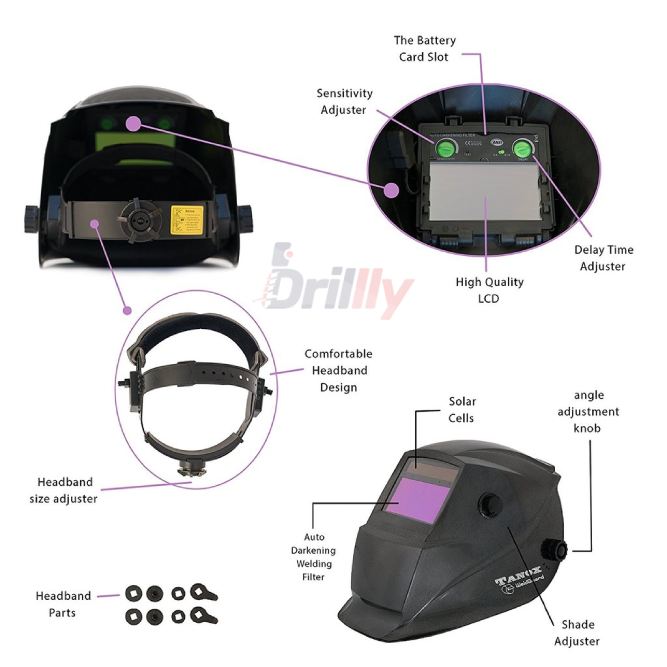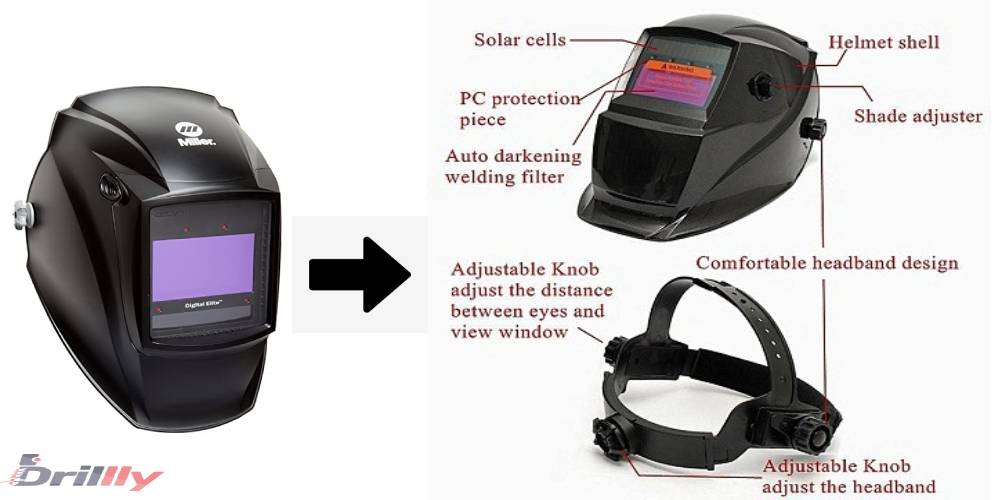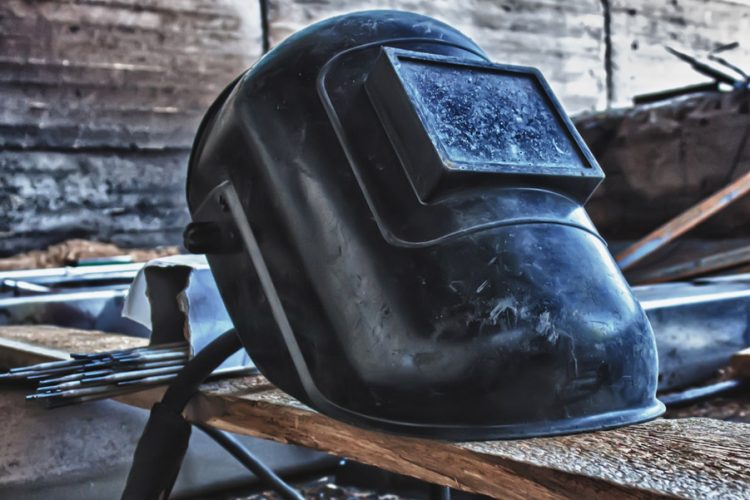Auto darkening welding helmets are very complex. They use sensors and other electronic components to block UV and IR rays. Certainly, understanding how they work is the best way to get familiar with these welding tools.
If you don’t have advanced knowledge in electronics, don’t worry. Today, we’ll explain in a clear a simple way, how do welding helmets work. You’ll also find some interesting information about their different components.
Components Of Auto Darkening Welding Helmet

UV/IR filters
The UV/IR filter reflects the UV and IR radiation that can hurt your eyes. It’s basically a piece of glass with thin metal layers inserted inside its structure. These layers are made of aluminum oxide and silver. They’re 11 layers with a total thickness less than 1 micron.
Usually, the UV/IR filter has a purple color. When light passes, the filter removes the blue spectrum. The end result is a greenish light, safe for your eyes.
Polarization filters
On the other hand, if the polarizers are completely parallel, the light passing through is brighter.
Light sensors and arc sensors
Arc and light sensors work together to vary the shade of the lens according to the light intensity. Light sensors work by the action of natural light.On the other hand, arc sensors work by the action of more intense light, emitted by a welding arc.
Usually, when there’s no welding arc, the sensors set the lens to a shade 3. However, during the welding process, the shade can vary between 8 and 14.
Liquid Crystal Cells (LCC)
Liquid crystal cells deflect the light direction. For example, if they’re completely flat, they deflect light at 90 degrees. LCCs can vary their position with electrical stimulation. That way, it’s possible to control the light direction at convenience.
How Do Auto Darkening Welding Helmets Work?

1. Before welding
When the helmet is turned off, the lens shows a shade of 5 or 6. This feature keeps the eyes protected in case that the helmet fails during the welding process. Then, when the helmet is turned on, the lens becomes clearer, showing a shade 3.
2. During welding
Less than a millisecond after arc light strikes the lens, it automatically darkens. The combined action of the sensors, polarizers and LCCs varies the shade of the lens between 8 and 14.
3. After welding
The lens slowly passes from a dark to a clear state. The time the lens takes to come back to a shade 3 depends on the delay time configured by the user.
4. Reasons an auto darkening welding helmet may not work properly
A dirty lens
To get the best visibility out of your welding helmet, the lens should remain clean at all times. Welding debris, dust and other particles tend to stick to its surface. So, it’s convenient to do a superficial cleaning with a soft cloth before and after each use.
An inappropriate fit
Your welding helmet should perfectly fit the shape and size of your head. Also, the lens should completely cover your eyes. In case of an inappropriate fit, the helmet will move during the welding process. Also, the arc light may enter through the edges of the helmet.
The lens doesn’t supply of appropriate shade
Over time, welding lens tend to fade. When this happens, the lens doesn’t supply enough shade to protect your eyes. So, if you start to get burning eyes after welding, there’s probably something wrong with the lens.
Conclusion
Certainly, there’s still a lot to learn about auto darkening welding helmets. However, after reading this short explanation, you’re better prepared to identify any possible flaws.
FAQs
Q. 1: Are all welding helmets battery powered?
Ans. It all depends on the model. Some auto-darkening welding helmets use rechargeable lithium batteries to operate. Others operate by the combined action of a solar panel and rechargeable batteries.
Q. 2: Can welders go blind?
Ans. Improper use of welding helmets and other protective equipment can be the cause of severe vision damage. In the best case, the welder may suffer from photokeratitis, which is temporary. However, in the worst case, the welder may lose his vision permanently.
Q. 3: What is the average service life of an auto darkening helmet?
Ans. It all depends on the quality of the product and the treatment it receives. With proper use, a low-price helmet can withstand 3 years without trouble. On the other hand, products of better quality can last up to 5 years.








